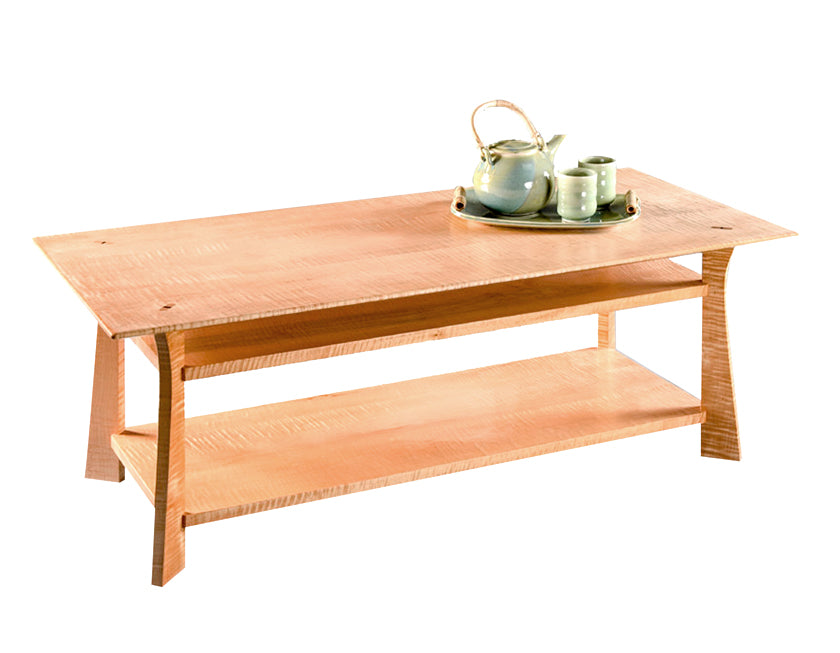
#Waterfall coffee table plus#
With the wood purchased, we cut boards to about 40 inches in length (our table width of 30” plus 3” for each side plus some wiggle room), cleaned up the edges, and started to lay out the top of the table. Of course we knew none of this at the time. It turns out rift-sawn creates very long, parallel grain lines along the face of the boards that are great for furniture and ended up fitting this design really well. All of these terms refer to the way the wood planks are cut from the tree and the resulting grain pattern. It was the first white oak that we saw and we didn’t realize that we had “upgraded” from plain-sawn and quarter-sawn. Buying the rift-sawn pieces was actually a happy (albeit expensive) accident. We went back to our favorite lumber store ( Th&H) and bought a bunch of pieces of rift-sawn white oak in 1-inch thickness. The downside was that the design would now require a whole ton of 45-degree miter joins, which neither of us felt super comfortable with. The upside was that it would make it much easier to get the lumber and would make the final product much lighter. Since the grain pattern will be continuous across the bend, it can look like a single solid piece. You can think of this like taking a flat board and “bending” it 90 degrees downward. They used a “waterfall” edge to create the impression of a continuous piece. We found that in both cases, while they were made to look like solid 2-3 inch pieces of wood, they were actually not. Since we were close to some of these furniture retailers, we actually went and looked at a couple of these tables in person.

So day 1 and the plan was already completely out the window. What little we did find wasn’t super high quality and weighed (and cost) a ton.


But when we went to look for the lumber, we found almost nothing that was in 3-inch thickness. We’d join 8-10 pieces together with the grain running along the short side of the rectangle to make the top, and build similar pieces to create the big block legs. The design assumed we’d use thick, 3-inch pieces of either pine or white oak.


 0 kommentar(er)
0 kommentar(er)
